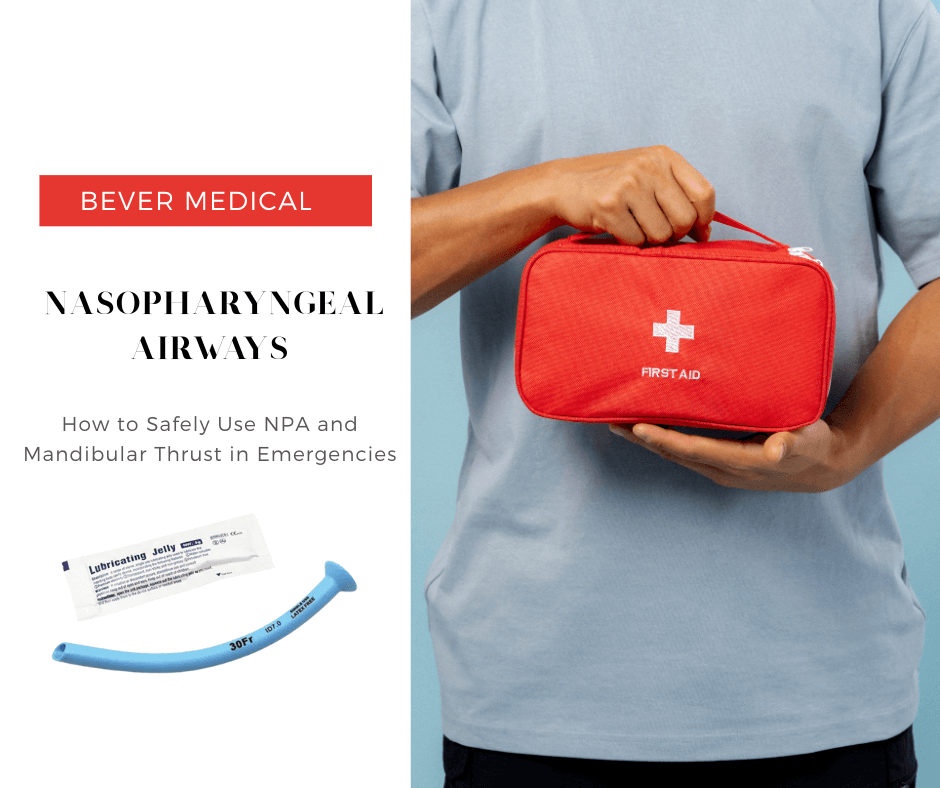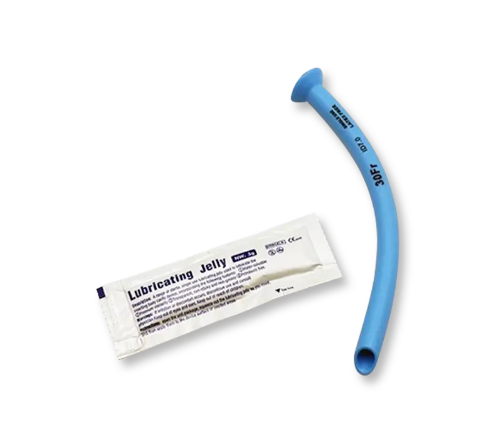TEl: +86-13148388090
Fax:+86-571-88616515
How to Safely Use NPA and Mandibular Thrust in Emergencies
Author: admin / 2025-08-08When someone can't breathe—whether it's out in the field, during a rescue, or in the ER—you don't always have time to wait. A nasopharyngeal airway (NPA), sometimes named a nasopharyngeal trumpet, can keep the airway open fast. And if you can't get a tube in right away, the jaw thrust is a simple move that can save a life. This guide shows how to use both safely, with tips from real situations to help you get it right when it really counts.

Nasopharyngeal Airway Selection and Insertion
When someone can't breathe well but still has a gag reflex—or they just can't handle something in their mouth—an NPA (nasopharyngeal airway) can be a lifesaver. It's soft, flexible, and goes through the nose to keep the airway open without setting off the gag.
Key Features from Bever Medical:
- Smooth, rounded tip that slides in easy
- Flared end with size marked right on it—no guessing
- Comes sterile, latex-free, and some packs include lube or a jelly packet
- Sizes from 14 to 38 French, one per pack, FDA and CE certified
In the field, real-life situations show just how important a good NPA is. Take Sergeant-Medic Ramirez in Kandahar: she found a soldier with facial burns and a swollen tongue. The guy was barely conscious and struggling to breathe. Ramirez grabbed a 28 Fr NPA from her kit, tore open the jelly packet, lubed the tip, and slid it in—bevel side toward the septum. Within seconds, the soldier started breathing on his own. No gagging, no delay. Just quick action and the right tool.
Studies show NPAs can really help. In one trial during sedation, the number of patients with low oxygen dropped from 13.5% to just 1.9%. And only 4.7% had minor nose injuries.
How to Use It (Step-by-Step)
- Pick the right size—nostril to earlobe is a good guide
- Add lube if it's not pre-lubed
- Slide it in gently, bevel toward the septum
- Stop when the flange touches the nose
- Check for breath sounds and chest rise
Don't Use If:
There's major facial trauma
You think there's a skull fracture at the base
How to Combine Jaw Thrust and NPA for Faster Airway Access
Corporal Singh's patient lost consciousness during transport over rough terrain. A rapid jaw thrust converted silent obstruction into audible ventilations, buying time until landing.
Efficacy and Comparison
Studies show the jaw thrust works just as well as head tilt in most cases—and it's safer if there's a neck injury. In sedated patients, modified jaw thrust improved upper airway patency at the tongue base in 82% of cases, albeit with occasional arousal in 10%.
Integrating NPA and Jaw Thrust
Using both together works even better.
First, do a jaw thrust to open the airway. Then slide in the NPA to keep it open. This lets the patient keep breathing or helps with suction. Keep an eye on their breathing and oxygen.
Tip: Instead of guessing the size, try this: do a quick jaw thrust and see how far the jaw moves forward. That can help you pick the right NPA length and avoid hurting soft tissue.
Product Selection Tips for B2B Buyers
Opt for sterile, individually packaged NPAs with rounded tips and clear ID markings.
For rapid deployment, choose pre-lubricated kits (one NPA + jelly) sized 14 Fr–38 Fr.
Ensure OEM flexibility for co-branding in IFAKs and compliance with FDA 510(k) and CE.
Train staff with hands-on drills using both unlubricated and pre-lubricated NPAs alongside jaw thrust practice.
Final Thoughts
Mastering the safe use of the nasopharyngeal airway and mandibular thrust maneuver transforms airway management in emergencies. Equip your teams with a high-quality nasopharyngeal airway kit and rigorous training to ensure readiness in any environment.
Want to make sure your team's ready? Check out BEVER Medical's full range of NPAs. We've got FDA-cleared options to help you save more lives.



